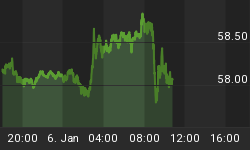When you think of a bubble in the 1920s, what comes to your mind? We are willing to bet that it isn't the Florida real estate craze of 1925. That's right, in the early 1920s, land prices in Florida began to rise as tourism was thriving and celebrities from around the world were spotted partying in and around Miami. Add to that exponential population growth and the superficial, money-centered culture of the time, and housing prices in this new playground of the wealthy and famous were guaranteed to grow exponentially.
By 1924, the Miami Herald was rumored to be the nation's heaviest newspaper in terms of weight because of the colossal amount of real estate classified ads in its pages. Easy credit was abundant and it seemed like 99% of the public was either a real estate investor or broker. Stories of property prices rising 500% in less than a year reached the rest of the country and soon capital poured in at an even faster pace. The music finally stopped during the summer of 1925 and prices started to decline by Christmas. The pace of selling increased and, just when it couldn't get any worse, a hurricane wreaked its havoc the following year. Game over.
Between 1926 and 1929, the Florida real estate market barely recovered. Economic historians will tell you that the only reason why Florida real estate saw any relief at all in the late 1920s was because of the wave of nation-wide prosperity from a dramatically rising stock market. But as you all know, the stock market stopped rising and crashed in October of 1929. Stocks collapsed and took everything down with them including real estate.

Today, we see many parallels to the 1920s, except this time the stock bubble came first. We suspect that when history books are written about the first ten years of the millennium, it will be a (credit crunch-induced) real estate collapse that is most memorable, rather than the NASDAQ collapse of 2001. Perhaps 2005 will be the year that real estate takes everything down with it, similar to how 1929 saw stocks take everything down with them. The parallels are obvious. How many people do you know who are real estate agents, mortgage brokers, appraisers, builders, developers, etc? Can you recall the last time you were at a restaurant or cocktail party and the conversation didn't swing to real estate?
What we see coming is classic deflation folks, where cash is king and all other assets will suffer. Hold on a second - are we suggesting you dump all of your money in some junky money market with an anemic yield? Of course not! If you have been reading our newsletter for anytime at all, you will realize that there are other cash alternatives to the US Dollar. Our two favorites are gold and silver as they are the world's oldest forms of money – dating all the way back to biblical times.
















